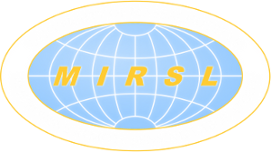Instruments
The microwave and millimeter-wave sensors developed by MIRSL since 1980 are listed in the table below. Most were conceived, designed, fabricated, and tested entirely by MIRSL personnel; a few were furnished by government sponsors and refurbished with modern components and subsystems to enhance their performance. These instruments provide opportunities for our graduate students to be involved in the synthesis and implementation of new engineering ideas.
|
Sensor |
Frequency |
Notes |
|
Turbulent Eddy Profiler (TEP) |
915 MHz |
Digital beamforming wind profiling system developed with support from the Army Research Office.
|
|
L-Band Radiometer |
1.4 GHz |
Developed for the USDA. Used for soil moisture, ice thickness and ocean salinity measurements. Upgraded for dual-polarization measurements during 2000. |
|
Electronically Steered Thinned Array Radiometer (ESTAR) |
1.4 GHz |
Developed with NASA GSFC. Used for soil moisture measurements since 1988 in collaboration with USDA. |
|
S-Band Radiometer |
2.65 GHz |
Developed for the USDA. Used for soil moisture and ice thickness measurements. |
|
S-Band FMCW Radar |
2.9 GHz |
Developed under sponsorship from ARO and DOE. This sensitive radar measures scattering from variations in the refractive index and from insects. |
|
Stepped-Frequency Microwave Radiometer (SFMR) |
4.5-7.0 GHz |
Measures ocean surface wind speeds and rain rate in hurricanes. Now used with IWRAP (see below) for active/passive observations of the ocean surface. |
|
Imaging Wind and Rain
Airborne Profiler (IWRAP, formerly C/Ku-SCAT) |
5.0-5.4 &
12.8-13.9 GHz |
Measures ocean surface wind speed and direction and atmospheric boundary layer winds in the presence of rainfall. Used extensively for hurricane research aboard NOAA P-3 research aircraft.
|
|
Dual Beam Interferometer (DBI)
|
5.3 GHz
|
An airborne interferometric synthetic aperture radar. DBI is designed to map ocean surface currents from one pass over the target area. Developed with support from ONR.
|
|
Focused Phased Array Imaging Radar (FOPAIR)
|
10.0 GHz
|
Developed for ONR. Used for surface wave and current imaging on the ocean. Horizontal and vertical polarizations, as well as short-baseline interferometry.
|
|
K-Band Polarimetric Radiometer (KPR)
|
18.7 GHz
|
|
|
Three-Frequency Airborne Radiometer (TARAD)
|
20.6, 22.235 & 31.6 GHz | Developed for NSF to operate aboard the University of Wyoming King Air research aircraft. Uses three channels to improve retrieval of water vapor and cloud liquid. |
|
Cloud Profiling Radar System (CPRS)
|
33 and
95 GHz |
Fully polarimetric coherent Ka and W-Band radars simultaneously measure cloud extent, particle phase, and velocities. A truck-mounted system. Operates during Intensive Observation Periods at the ARM CART sites.
|
|
Polarimetric Ka-Band Radar (Ka-Pol)
|
35 GHz
|
Measures polarimetric scattering properties of foliage and snow. Used for simultaneous measurements of natural surfaces with 95 and 225 GHz polarimeter for ARO.
|
|
Ka-band Polarimetric Radiometer (KaPR)
|
36.5 GHz
|
|
|
Airborne Cloud Radar (ACR)
|
95 GHz
|
|
|
W-Band Polarimeter (W-Pol)
|
95 GHz
|
Used to measure the polarimetric scattering properties of natural surfaces. This instrument obtained the first airborne cloud images from the University of Wyoming King Air research aircraft.
|
|
UAV Cloud Radar (UAVR)
|
95 GHz
|
Fabrication completed and undergoing engineering field tests. Unmanned airborne vehicle use planned for 2003. The purpose of this lightweight radar is to study cloud structure for the DOE ARM program.
|
